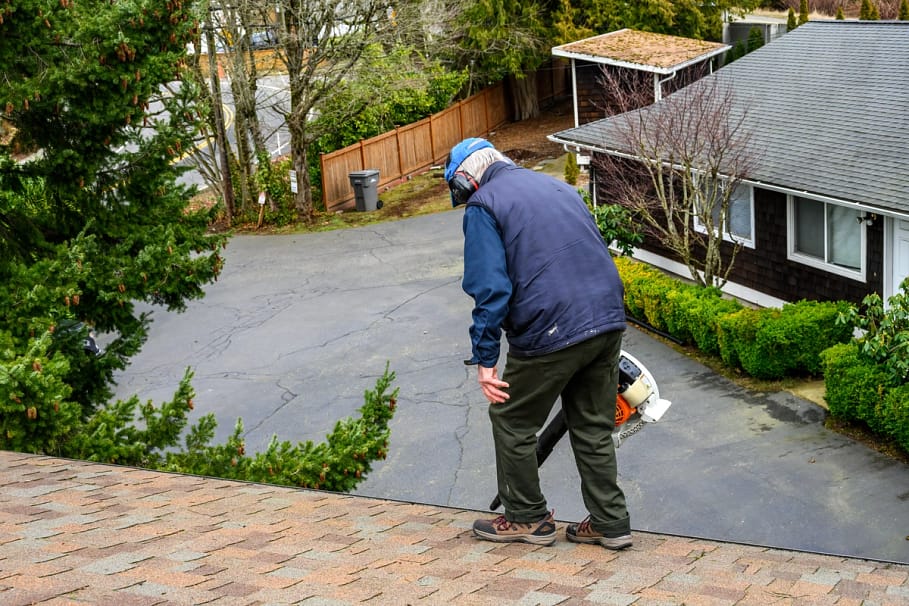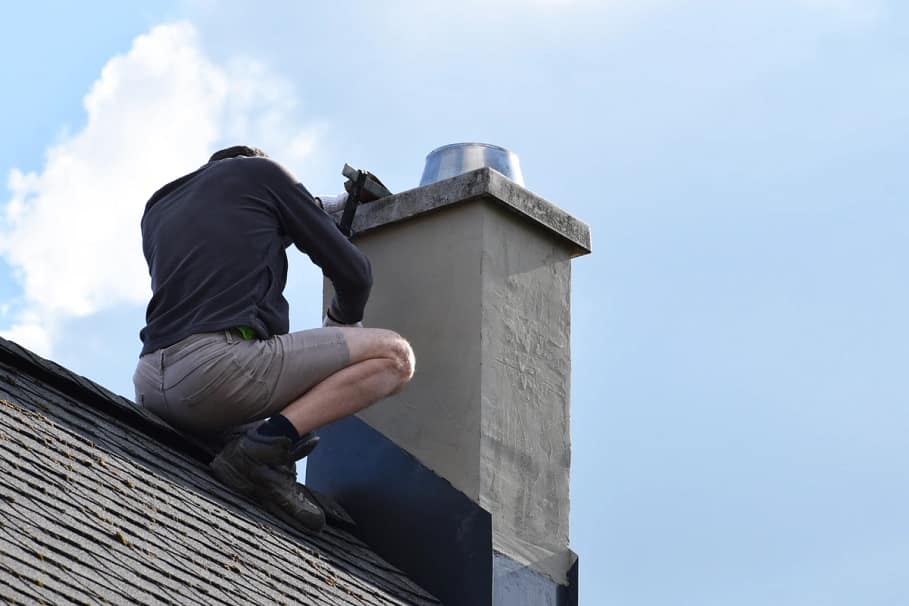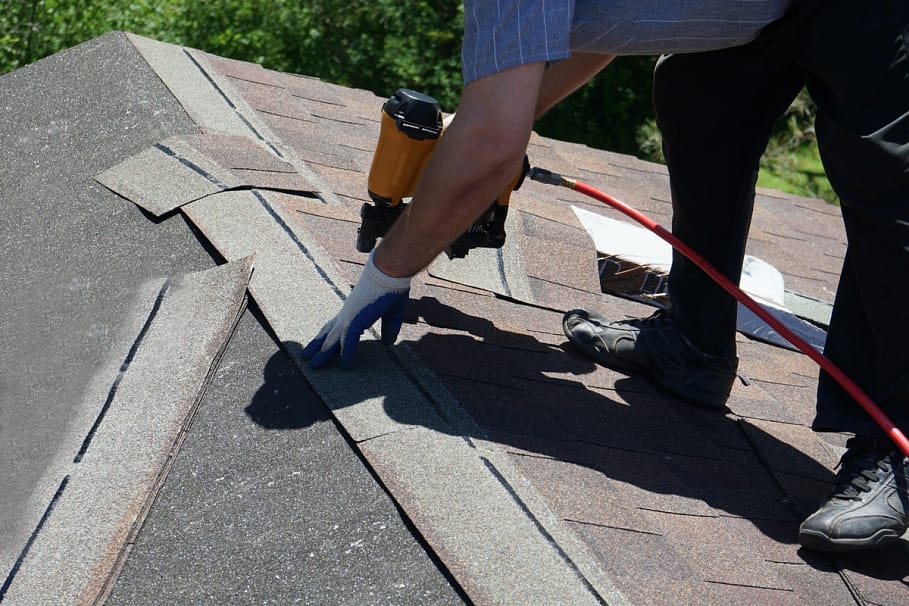12 Easy Roof Repair Tips You Can Do Yourself
Your roof is your home’s first line of defense against the elements. But sometimes, Mother Nature can be relentless, and accidents happen. When you’re faced with a roofing emergency, you need to act fast to prevent further damage.

Your roof is your home’s first line of defense against the elements. But sometimes, Mother Nature can be relentless, and accidents happen. When you’re faced with a roofing emergency, you need to act fast to prevent further damage.
Don’t worry, though – we’ve got you covered (pun intended)! In this blog, we give the best DIY roof repair tips to help homeowners like you weather the storm and keep your sanctuary dry and cozy.
Keep reading to get the scoop on the best tips to follow for the next time your roof is in need of a quick fix!
1. Safety First! ????

Before we dive into the emergency fixes, remember to prioritize safety. Here are some crucial safety tips:
- If the roof is slippery or unstable, do not attempt repairs yourself.
- Use proper safety equipment like a harness and sturdy ladder.
- Be cautious of electrical hazards, especially during storms.
- If in doubt, call a professional roofer.
2. Locate the Leak ????️♂️
When you’re dealing with a pesky roof leak, it’s a bit like being a detective trying to solve a mystery. Your mission, should you choose to accept it, is to figure out where that sneaky water is coming from.
Water doesn’t always take the most direct route from the rooftop to your living room ceiling. So, even though you might spot a water stain on your ceiling, the source of the leak could be playing hide-and-seek somewhere else on your roof.
So, here’s what you need to do: start by looking for clues inside your home. Water stains on the ceiling or walls are telltale signs that something’s amiss up there on the roof. If you’re lucky (well, as lucky as you can be with a leaky roof), you might even catch the water in the act with some dripping or pooling water.
Once you’ve spotted these signs, you’re hot on the trail. But remember, the point where you notice these signs indoors might not be directly under the trouble spot on your roof. Water can travel along beams and rafters, making its entrance somewhere unexpected.
3. Tarp It Up! ????️
If you can’t immediately repair the leak, covering it with a tarp is a temporary solution. Here’s how:
- Place a tarp over the damaged area, ensuring it extends beyond the damaged section.
- Secure the tarp with heavy-duty ropes or bungee cords.
- Avoid nailing or stapling the tarp directly to the roof, as this can cause further damage.
4. Clear Debris ????

After a good ol’ bout of wind and rain, it’s not uncommon for your roof to end up playing host to an unwanted guest list of debris. Leaves, branches, and even shingles that have decided to take a little detour – it’s like a post-storm rooftop party up there! But all this party debris can lead to some not-so-fun consequences, like blocked drainage. And when your roof’s drainage system is clogged, it’s like a traffic jam for rainwater.
So if you’ve got rainwater pooling up on your roof, looking for any weak spots to sneak through–that’s when those sneaky leaks can happen. The thing is, water doesn’t care about your home’s no-leak policy. It’ll find any opening, no matter how tiny, and make itself right at home inside your cozy abode. This is when you’ll want to sweep away those soggy leaves, toss those mischievous branches aside, and help those displaced shingles find their way back to where they belong.
By safely removing this debris, you’re not just doing a bit of post-storm tidying up; you’re preventing potential leaks and water damage from crashing your home’s party. It’s like giving your roof a protective shield against the elements – a bit of extra love that goes a long way.
5. Patch Small Holes ????
If you notice small holes or punctures in your roof, you can make a temporary patch using roofing cement and a patching material. Here’s how:
- Clean the damaged area and remove any loose materials.
- Apply roofing cement generously over the hole.
- Place a patching material (like a piece of flashing or shingle) over the cement.
- Apply more roofing cement over the patch to seal it.
6. Use Roofing Tape ????
Roofing tape is basically the epitome of quick fixes for your roof. This waterproof, self-adhesive wonder can swoop in and save the day when you’re dealing with those pesky minor leaks, sealing up small cracks and gaps with ease. So, if you find yourself in a pinch with a little leak, keep some roofing tape on standby – it’s your trusty sidekick in the battle against unwelcome drips and drops.
7. Replace Missing Shingles ????
If you notice missing or damaged shingles, replace them as soon as possible. Here’s a simple DIY method:
- Carefully lift the shingle above the damaged one.
- Slide the new shingle into place and secure it with roofing nails.
- Apply roofing cement to seal the edges.
8. Fix Flashing Issues ????

Flashing is the metal material used to seal roof transitions, like where the roof meets a wall or chimney. If it’s damaged or missing, water can seep through. Here’s how to fix it temporarily:
- Apply roofing cement over the damaged area.
- Press a piece of new flashing into the cement.
- Seal the edges with more roofing cement.
9. Seal Around Vents and Skylights ????
Don’t forget to give those vents and skylights some extra attention during your roof checkup. These spots can be like secret entry points for water, and they might develop gaps or cracks over time.
To keep the elements at bay until you can tackle more permanent fixes, grab some roofing sealant. It’s like a waterproof superhero cape for your roof, creating an airtight seal and ensuring that raindrops stay where they belong – outside!
10. Unclog Gutters ????
Think of your gutters and downspouts as the heroes of your home’s defense system against water damage. But, here’s the deal: when they get clogged with leaves, twigs, and other debris, they can’t do their job effectively. That means water can’t flow freely, and it might just decide to take a detour into your home.
So, to keep the water where it belongs – outside – make it a habit to regularly clean those gutters and downspouts. It’s a simple task that goes a long way in preventing leaks and costly water damage.
11. Call a Professional Roofer ????

While these DIY fixes can help in a pinch, it’s essential to consult a professional roofer for a permanent solution. They have the expertise and equipment to assess the extent of the damage and provide long-lasting repairs.
12. Regular Roof Maintenance ????
The best way to prevent emergency roof repairs is through regular maintenance. Here are some tips:
- Schedule annual roof inspections with a professional.
- Trim overhanging branches that could damage your roof during storms.
- Keep your roof clean and free of debris.
- Check for loose or damaged shingles and replace them promptly.
Repair Your Roof Like a Champ
By following these emergency roof repair tips and practicing good roof maintenance, you’ll be better prepared to handle unexpected roofing issues and protect your home from water damage. Remember, safety should always come first, and when in doubt, don’t hesitate to call in the experts. Your roof will thank you, and so will your peace of mind!
What's Your Reaction?





































































